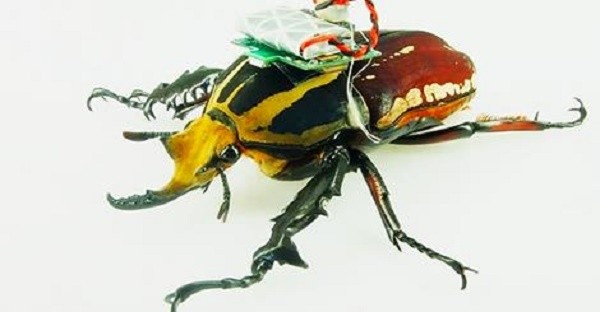Cyborg Beetles are in the news, not just because giant flower beetles have been transformed into a cyborg but because the experiments are revealing the roles of muscles in steering the flight.
Cyborg insect research at UC Berkeley and Singapore's Nanyang Technological University (NTU) shows that muscle thought to be responsible for wing movements is also key to the beetles' finely graded turns.
Futurity informs that the Mecynorrhina torquata, or giant flower beetles, that usually average 6 centimeters in length and are nearly as heavy as a $1 coin were used as models. The beetles were adorned with a backpack that contained tiny computers and radio transmitters.
In the study, six electrodes were connected to the beetle's optic lobes and flight muscles to study the neuromuscular data. By studying the beetles that flew untethered, scientists studied the neuromuscular data.
The UC Berkeley News Center reports that the new study found that the coleopteran third axillary sclerite (3Ax) muscle, responsible for articulation of wings, plays a major role in the beetle's ability to steer left or right.
"Since the 1800s, this coleopteran muscle was thought to function solely in wing folding. We see now that this muscle is also used for turning," said study lead author and NTU professor Hirotaka Sato.
Meanwhile, the higher level of remote control of free-flying beetles has been performed for the first time, according to the researchers. The researchers said that it can be a boon for search-and-rescue operations in places that are dangerous or too tiny for human intervention.
"With this technology, we could safely explore areas not accessible before, such as the small nooks and crevices in a collapsed building," Sato added.
The study was done in a closed room fitted with 3D motion-capture camera devices, but it can be applied to real-life situations as well. The study is a great achievement for science, say the researchers.
"It's a great partnership between engineering and science," Sato said.



























